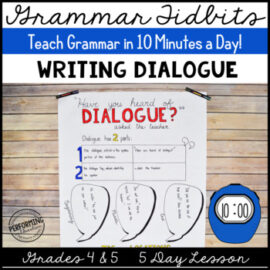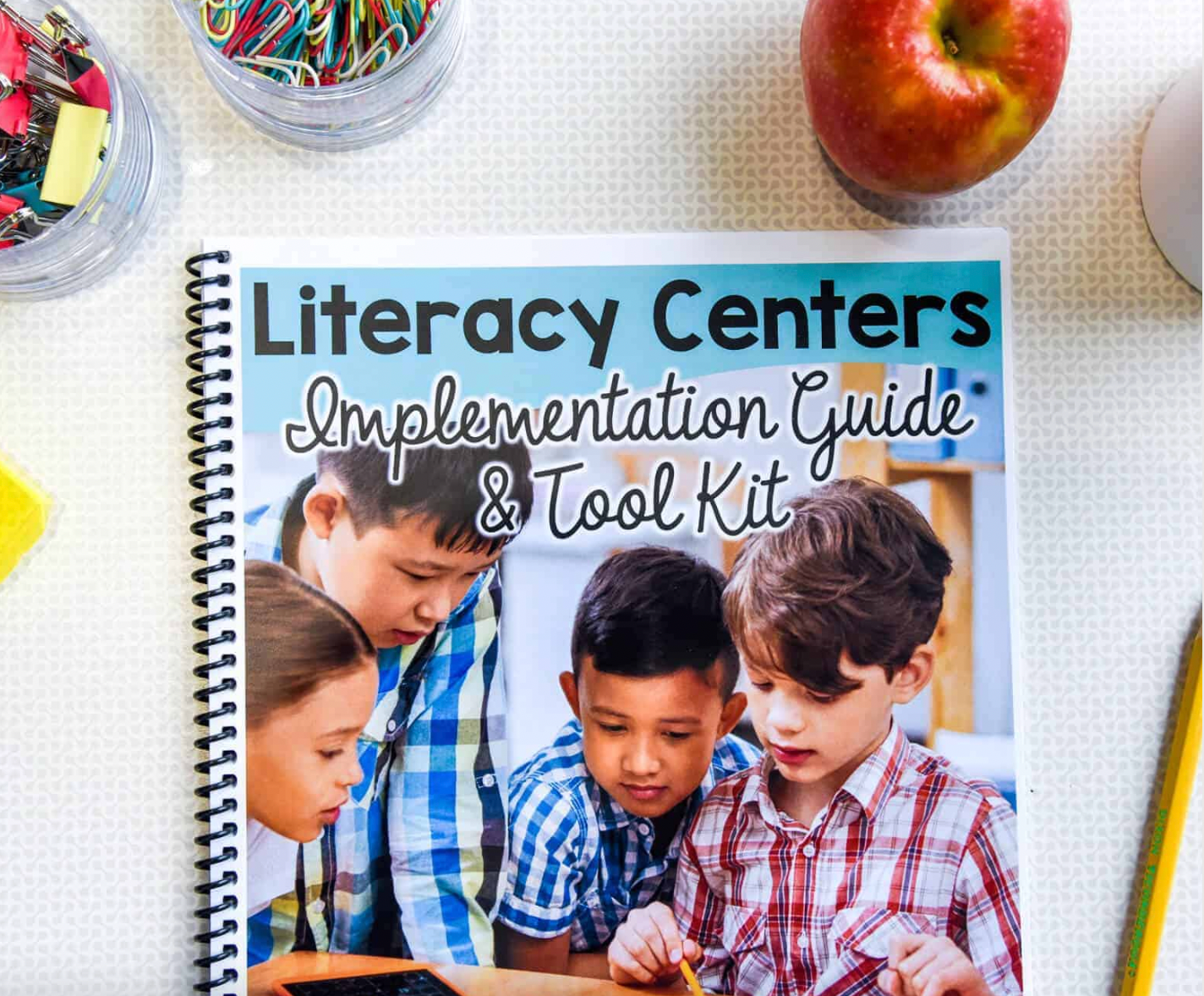One of my biggest struggles with teaching writing is fitting in time for grammar. My students desperately need it, but we barely have enough time for them to write, much less for me to teach the grammar concepts! This is why I mastered the mini-lesson with both grammar and writing.
Do the Prep Work
Before your mini-lesson, do the prep work. I use anchor charts to teach, but I create the structure of the anchor chart before the actual lesson. This way, I’m not wasting too much time creating the layout or organizational structure of the chart.
I’m not much of an artist, so I started creating anchor charts and printing them on 24 x 36 draft paper for a few dollars at Staples. You can find the full lessons with anchor charts in my Grammar Tidbits resource line here.
The magic happens in my gathering place (a place where we get together as writers). It does take extra effort in the beginning to set up a writing space like this, but the increased focus students have when they’re back there is totally worth it! With only 10 minutes a day of grammar, I need 100% engagement!
To prep students for the gathering place, we practice getting supplies ready and back to the area in less than 20 seconds. When I have a larger class, the procedure includes groups coming in order of closest to furthest away from the area and making organized rows. The photo below is from a writing small group I do gathering place with, but it’s a very similar setup.

Set a Timer

I’m one of those weird teachers that can talk about writing and grammar for hours. Setting a timer helps me to focus my lesson delivery and only give students the information they really need. Setting a timer will also create urgency with your students. In order to get through the lesson properly in time, they will need to come into the writing lesson prepared and focused.
Keep it all Organized
Organization is super important when you only have 10 minutes for your grammar lessons. My students keep all of their writing materials in a 1″ binder, with tabs for each type of writing and a tab for grammar lessons. They keep a table of contents for each section, so that they can easily find their notes to use for future projects.

Make a Daily Routine
It’s easy to fit it into 10 minutes when your students know what to expect each day. It’s also easier for you to plan! My students know what to expect each day from our grammar instruction. This cuts down on the number of questions I have about our notes and activities, since we do the same structures.
Day 1: Mini-Lesson with Anchor Chart
I print my anchor chart on 24 x 26 drafting paper at Staples for a few dollars. I also print out the matching 8 1/2 x 11 note page for students to take their notes on. This helps us all focus on the actual content instead of the heading and formatting.
I do my mini-lesson back in the gathering place with my anchor chart. Students take notes as we discuss and I model my own notes. We discuss what we notice about the grammar rules included with the concept.
Once we’re done, students put their completed note page into their writing binders and add it to their table of contents.
Day 2: Team Match/Sort Game
On day 2, your students use their notes from day 1 in a quick, collaborative sorting game. This game is meant to encourage discussion on the rules of the grammar standard. I walk around to facilitate discussion during the game. We then all come together and check our answers (2 min).
Day 3 & 4: Practice Pages
Two half-page practices are included, so that students can get the experience they need with this concept. Each day, students work on the five problems for five minutes, then we spend the rest of the time checking our answers together.
Day 5: Formative Assessment
On the last day, I use a quick 5-problem assessment to get an idea of how each student is doing with the concept.
Reuse Your Lessons
You don’t want the 10 minutes of instruction to be the only time students learn about a concept. If your students keep everything organized, you can refer back to your grammar mini-lesson while conferencing with them.
Let’s say you notice that one of your students has several dialogue punctuation errors in their narrative writing. First, direct them to open to that lesson in their notes. Then, have them mark the sentences they need to correct and use their notes to do so. Students should always be flipping through their writing notes when they’re working and when they’re conferring with you.






